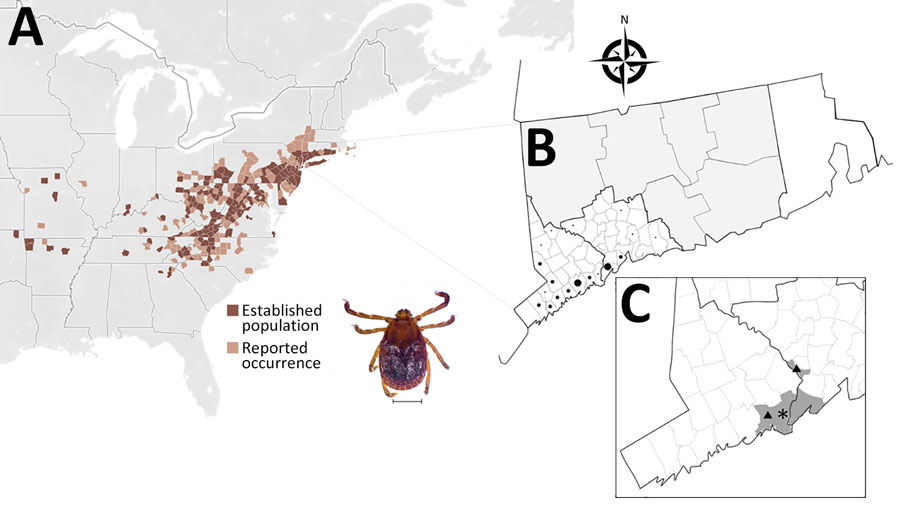Volume 31, Number 6—June 2025
Research Letter
Ehrlichia chaffeensis DNA in Haemaphysalis longicornis Ticks, Connecticut, USA
Figure

Figure. Maps showing range and locations of ticks in a study of Ehrlichia chaffeensis DNA in Haemaphysalis longicornis ticks, Connecticut, USA. A) Map of eastern United States showing states with established populations or reported occurrence of H. longicornis. B) For comparison, map of Connecticut showing locations (dots) where residents reported removing H. longicornis ticks that they submitted to the Connecticut Agricultural Experiment Station Tick Testing Laboratory. This area overlaps with area in which E. chaffeensis–positive H. longicornis ticks were collected for this study (C); dot size indicates number of ticks collected per area, either 1, 2–5, or >5 ticks. C) Map of southwestern part of the state showing areas of known established H. longicornis tick populations (shaded in gray), location of tick specimen found to be positive for E. chaffeensis (asterisk), and location of specimens found to be positive for Borrelia burgdorferi (triangles). Inset shows adult female H. longicornis tick; scale bar indicates 1 mm.